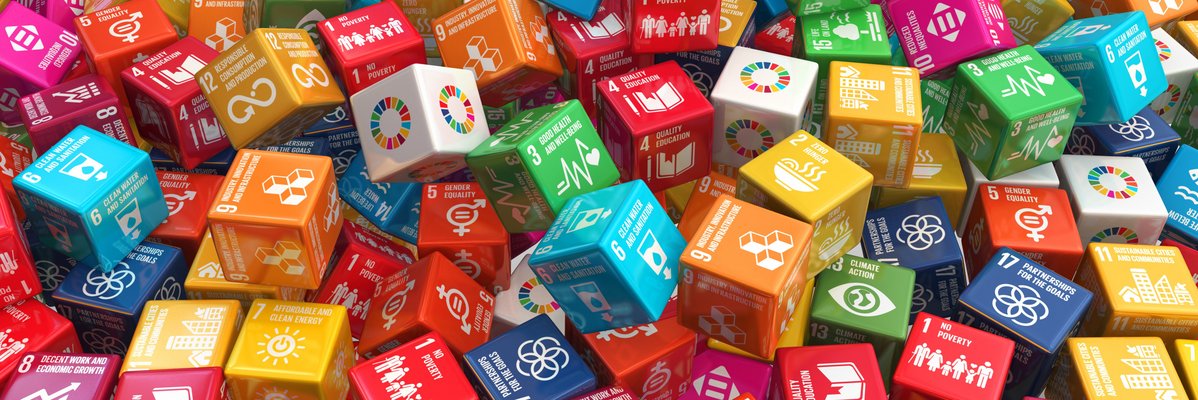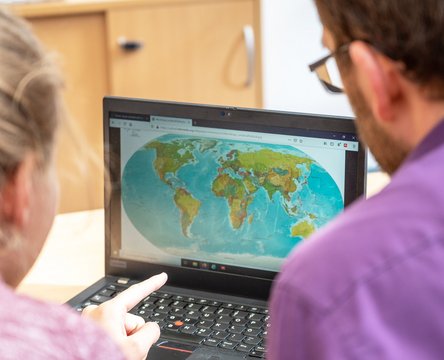Global Health considers human health in a global context. It focuses on improving physical and mental health, addresses inequalities, and aims to enhance access to prevention and treatment of diseases in an increasingly globalized world.
In order to achieve these goals, scientists from different fields and countries must come together to ask the right questions, generate answers and evidence through studies, put results in transdisciplinary context, and ideally provide recommendations for policies to improve individual and public health across the globe.
In our Global Healthworking group, experts in epidemiology, statistics, social sciences and medicine from different nations meet regularly. Hence we create links between clinical medicine, basic laboratory research and the health needs of populations.
In addition, we deal with the transnational epidemiology of diseases and their time trends, the comparison of geographical regions and their respective disease characteristics, different population groups and social layers.
Since 2009 we have been working with scientists from Addis Ababa University (Addis Ababa, Ethiopia), establishing bilateral exchange of doctoral students in 2015. A major focus of our research projects is on this region, cooperating intensively on a professional level and also deepening interpersonal relationships.
The Global Health working group also cooperates with the African Cancer Registry Network (AFCRN), the Global Initiative for Cancer Registry Development (GICR) and the International Agency for Research on Cancer (IARC). This cooperation enabled us to expand our projects in Sub-Saharan Africa (SSA).
Global Health Working Group in the Media
A hospital partnership is at the forefront of efforts to improve cervical cancer screening and treatment
Cervical cancer is easily preventable, but a lack of screening means that many women in Ethiopia are diagnosed late – and then face long waiting times to see a cancer specialist. With support from the Hospital Partnerships programme, multidisciplinary teams from the Martin-Luther-University Halle-Wittenberg and Addis Ababa University have been tackling these challenges together.Read more....
Global Health Topics
The fact that to date, despite all efforts, cervical cancer is the second leading cause of death in Sub-Saharan Africa (SSA) among women, shows its increasing public health relevance and the need for increased attention and prioritization.
The World Health Organization (WHO) follows this prioritization and published a global strategy for the global fight against cervical cancer in November 2020.
According to the WHO, the 90-70-90 method can eliminate infectious cancer in young girls and women worldwide by 2030 (1):
“-90% of girls up to 15 years of age are to receive complete HPV vaccination.
-70% of women are to be screened with specific screening tests at the age of 35 and again at the age of 45.
-90% of women with cervical cancer are to receive cancer treatment (1). "
Human papillomavirus (HPV) types 16 and 18 cause 70% of cervical cancer and precancerous cervical lesions. Aside from HPV infections, women with human immunodeficiency virus (HIV) are also more likely to develop cervical cancer (1).
Although attempts have been made to implement these prevention measures in SSA for years, population-wide coverage is still out of reach in many countries:
Limited access to primary and secondary prevention programs, a lack of knowledge on cervical cancer in both the general population and among health workers, and few treatment centers are in large part the reality in SSA (2,3).
This leads to increased prevalence of advanced stages of cervical cancer and high mortality among affected patients (2,3).
Projects in SSA:
HPV vaccination: GAVI Alliance
Pilot projects such as school-based HPV vaccination programs supported by the GAVI (Global Alliance for Vaccines and Immunization) alliance have been successfully tested in eight countries in Africa, including Ethiopia, Rwanda, Tanzania and Kenya (2). Governments have given their consent to widespread HPV vaccination, but the delivery and fair distribution of the vaccine remains a problem.
In the future, increase in national vaccination programs for girls between 9 and 14 years of age is expected for which concurrent prevention and awareness campaigns are required (4).
Additional information:
World Health Organization (WHO), Global strategy to accelerate the elimination of cervical cancer as a public health problem. [cited 2020 December 1] available from: https://www.who.int/publications/i/item/9789240014107
- Black E, Richmond R. Prevention of Cervical Cancer in Sub-Saharan Africa: The Advantages and Challenges of HPV Vaccination. Vaccines (Basel). 2018 Sep 8;6(3):61. doi: 10.3390/vaccines6030061. PMID: 30205561; PMCID: PMC6161067.
- Lim, Jennifer & Ojo, A.A.. (2016). Barriers to utilisation of cervical cancer screening in Sub Sahara Africa: a systematic review. European Journal of Cancer Care. 26. n/a-n/a. 10.1111/ecc.12444.
- GAVI-Allianz (Global Alliance for Vaccines and Immunization), Gavi impact in Africa. [cited 2020 December 1] available from: www.gavi.org/programmes-impact/country-hub/africa
Cancer is a Global Health problem. Worldwide, cancer is the second leading cause of death according to the World Health Organization (WHO) and hence is increasingly relevant to public health. WHO estimated that the annual incidence will increase from 14.1 million cases (2012) to 21.6 million cases in 2030. Indeed there were 18.1 million new cases worldwide in 2018, with 9.6 million people dying. Of all cancer-related deaths 75% occur in low- and middle-income countries. In these, 6.8 million people died as a result of cancer in 2018.
In sub-Saharan Africa, the most common cancers are: cancer of the cervix, breast, liver, prostate, lung, Kaposi's sarcoma, and esophageal / gastric lymphoma. In the region people are on average 10 years younger when they are first diagnosed than in high-income countries.
A growing and aging population, little knowledge of cancer among both the general population and among healthcare workers, an increased prevalence of risk factors such as smoking, obesity, inactivity and unhealthy diets range among the main causes for the rapid rise in cancer incidence. In addition, infectious diseases also play a major role: infections such as the human papillomavirus (cervical cancer), hepatitis B and C viruses (liver cancer), malaria and HIV infections as well as direct sunlight (skin cancer) also contribute significantly to the development of cancer.
Countries in sub-Saharan Africa are not yet prioritizing the fight on cancer in order to contain the rising numbers. There is little knowledge among the population about prevention, risk factors, and treatment of cancer. Cultural factors add to the obstacles hindering the implementation of preventive measures. Health workers complain that health budgets, infrastructure and staffing are insufficient to sustainably support measures for comprehensive preventive and educational campaigns. In addition, most countries lack national cancer registries that aim to provide reliable data on the extent and nature of the problem. The most common cancers in sub-Saharan Africa could largely be avoided, and a third of these cancers could be treated well if detected early.





